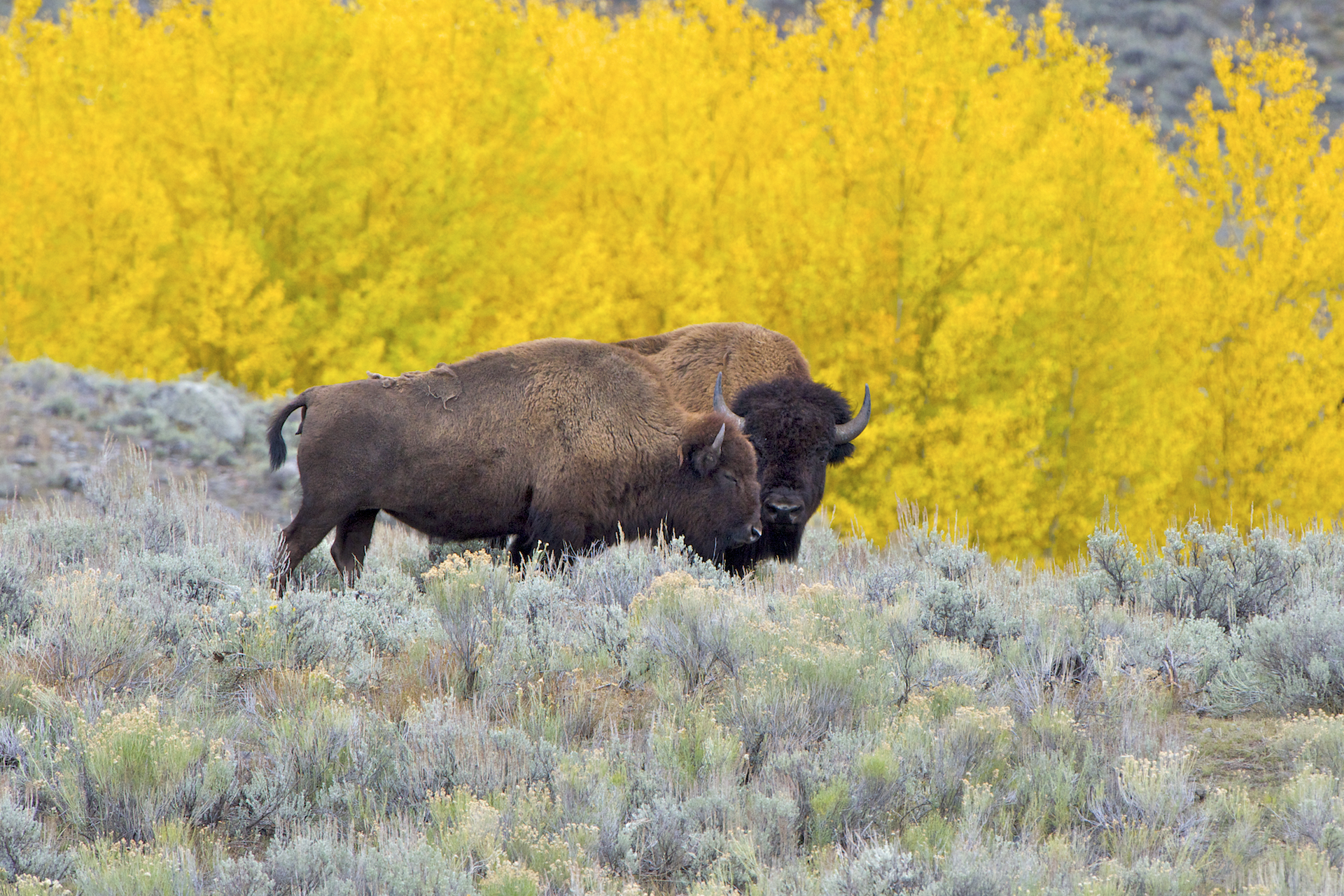Bison are magnificent creatures that symbolize the wild spirit of North America. These massive mammals, weighing up to 2,000 pounds and capable of running at speeds of 35 miles per hour, demand our respect and caution. While bison may appear docile as they graze peacefully across grasslands, they’re wild animals with powerful instincts and can become dangerous when they feel threatened.
Understanding bison behavior isn’t just fascinating—it could save your life during wilderness encounters. This article explores the warning signs that indicate a bison might charge, helping outdoor enthusiasts stay safe while appreciating these iconic animals from an appropriate distance.
The Tail Tell: Understanding Bison Body Language
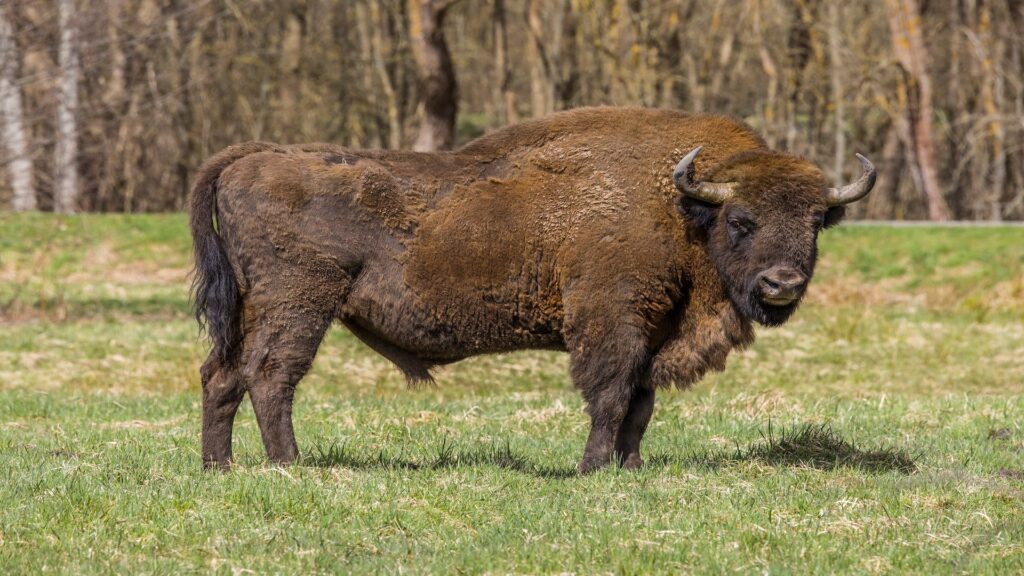
A bison’s tail is one of the most reliable indicators of its mood and intentions. When a bison is calm and relaxed, its tail typically hangs down naturally. However, when the tail begins to rise, especially if it stands straight up or starts to switch back and forth rapidly, the bison is signaling agitation or alertness to a potential threat.
This tail-raising behavior often precedes more aggressive actions and should be taken as an early warning sign. Experienced wildlife watchers know that a raised tail is similar to a warning flag—it means the animal is prepared to take defensive action if it feels further threatened. By the time you notice this sign, you should already be creating distance between yourself and the animal.
Head Positioning and Pawing: Signs of Growing Irritation
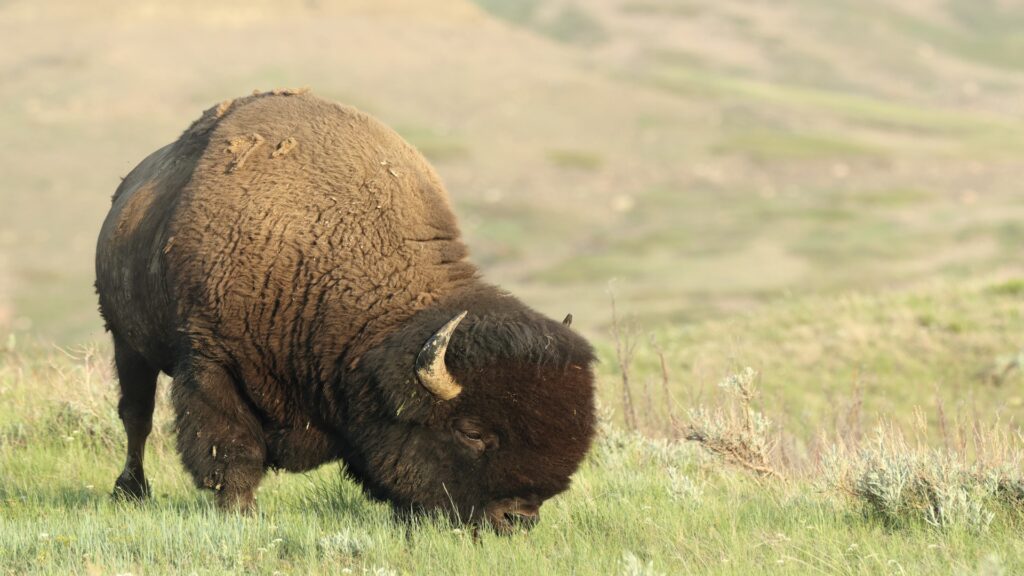
When a bison lowers its head and points its horns in your direction, it’s communicating a clear threat display that shouldn’t be ignored. This positioning allows the animal to prepare for a potential charge, bringing its most dangerous weapons—those massive horns—into an attack-ready position. Another concerning behavior is when a bison begins pawing the ground with its front hooves, kicking up dirt and grass. This pawing action isn’t just a nervous habit; it’s a physical manifestation of the animal’s growing agitation and a way of declaring its territory.
These behaviors often escalate in sequence, with head-lowering frequently following the initial tail-raising and pawing coming next as the animal’s irritation grows. If you observe these actions in combination, the risk of a charge increases substantially, and immediate but measured retreat is necessary.
Vocalizations: Auditory Warning Signals
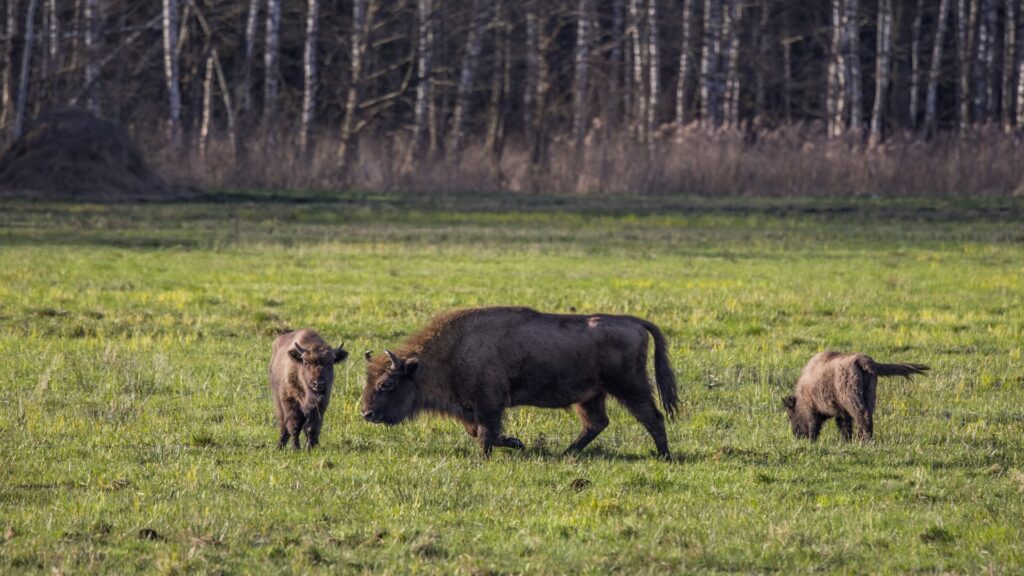
Bison aren’t silent creatures when they’re feeling threatened—they have a vocabulary of sounds that signal their discomfort and potential aggression. One of the most distinctive warning sounds is a deep, guttural snorting or bellowing that reverberates across the landscape. This vocalization serves as an unmistakable sign that the animal is agitated and could be preparing to defend itself. Some bison may also make a huffing or puffing sound as they expel air forcefully through their nostrils, similar to a bull preparing to charge. These sounds are particularly alarming when accompanied by visual warning signs like tail-raising or head-lowering.
Remember that by the time a bison is vocalizing its displeasure, you’re likely already too close and should be creating distance immediately without making sudden movements that might trigger an attack.
The Bluff Charge: Testing Your Reaction
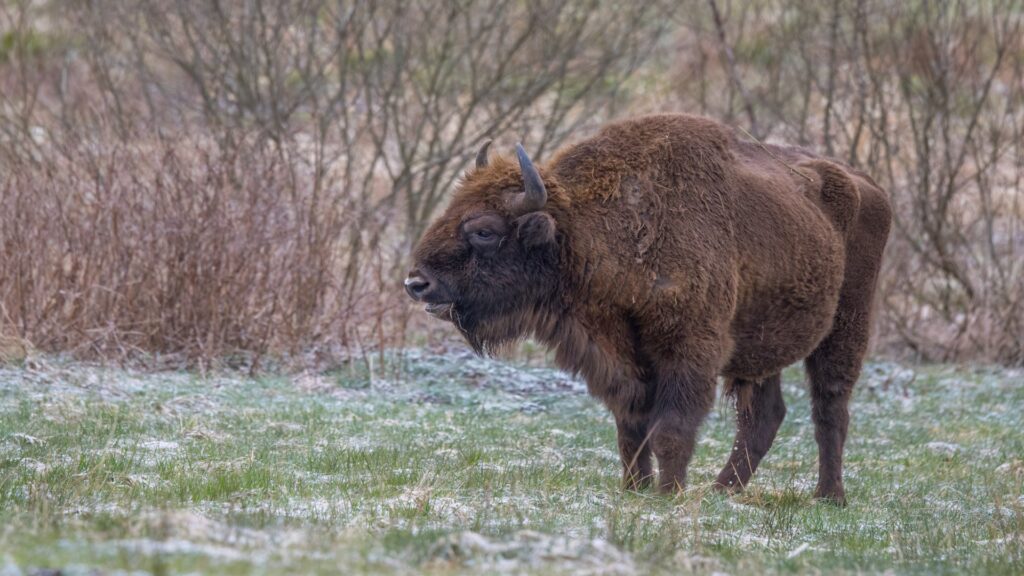
Many bison encounters include what experts call a “bluff charge”—a short, sudden movement toward a perceived threat that stops before making contact. These bluff charges serve as serious warnings and should never be dismissed as playful behavior. During a bluff charge, a bison may lunge forward several feet before stopping abruptly, testing your reaction and sending a clear message that you’re too close to its personal space. Wildlife biologists believe these bluff charges allow the animal to assess whether a full charge is necessary based on how the potential threat responds.
Unfortunately, many visitors misinterpret a bluff charge as the animal’s final warning, when in fact it may quickly transition to a full-speed charge if the person doesn’t retreat. Always treat any forward movement from a bison as a serious threat requiring immediate but careful withdrawal.
Increased Alertness and Staring
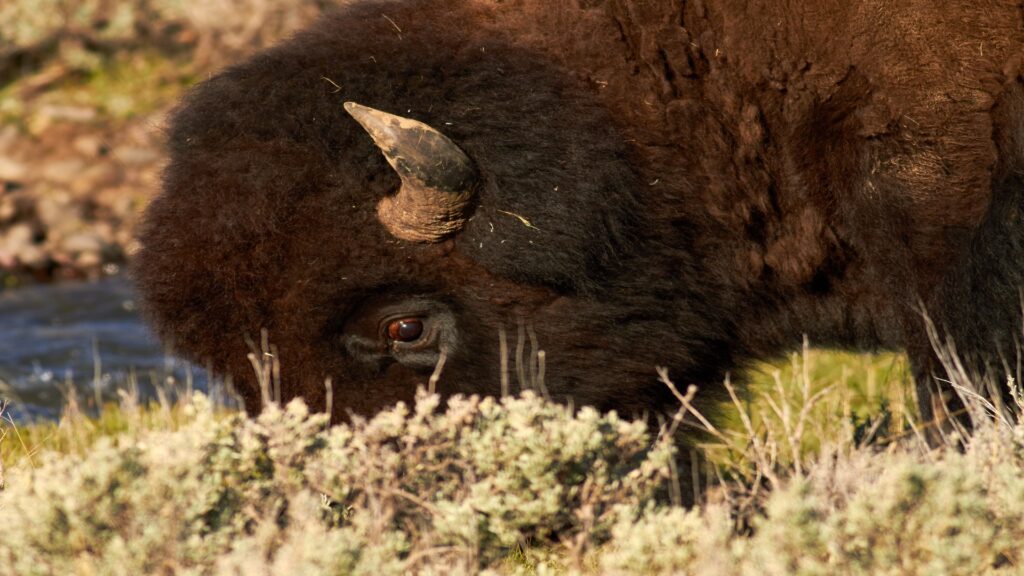
Before more obvious aggressive behaviors emerge, a bison will often display heightened alertness that careful observers can detect. The animal may suddenly stop grazing or resting to stand rigidly with its head up, ears forward, and eyes fixed directly on you. This intense staring isn’t casual interest—it’s the bison identifying a potential threat and focusing its full attention on your presence. Unlike prey animals that might look away periodically, a fixated bison maintains unwavering eye contact that communicates its awareness and concern.
This alertness may be accompanied by subtle shifts in body position as the animal orients itself toward you, preparing for potential defensive action. Recognizing this focused attention early gives you valuable time to back away slowly before the situation escalates to more serious warning behaviors.
Mating Season Aggression: Bulls in Rut
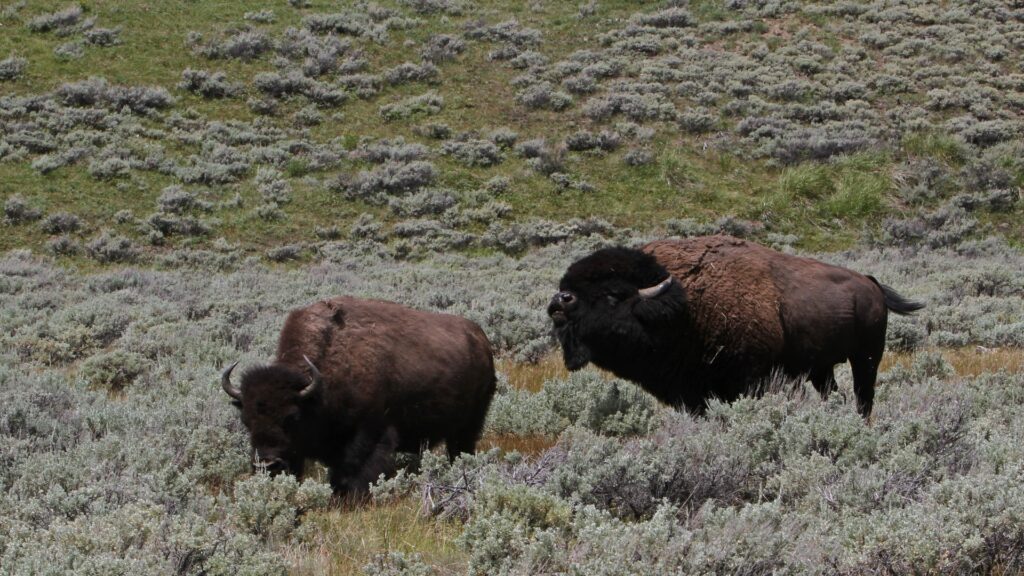
Bison behavior changes dramatically during mating season, known as the rut, which typically occurs from July through September. During this period, bull bison experience testosterone surges that make them particularly aggressive and unpredictable as they compete for mating rights. Bulls in rut display distinctive behaviors including wallowing in dirt, bellowing loudly, and engaging in combat with other males—all signs that their normal caution around humans may be diminished.
These rutting bulls are especially dangerous because their threshold for perceived threats is significantly lowered, and they may charge with little or no warning. The combination of heightened aggression and reduced inhibition means that safe viewing distances should be doubled during rutting season. Wildlife managers often issue special warnings to park visitors during these months due to the increased risk of dangerous encounters.
Protecting Calves: Maternal Aggression
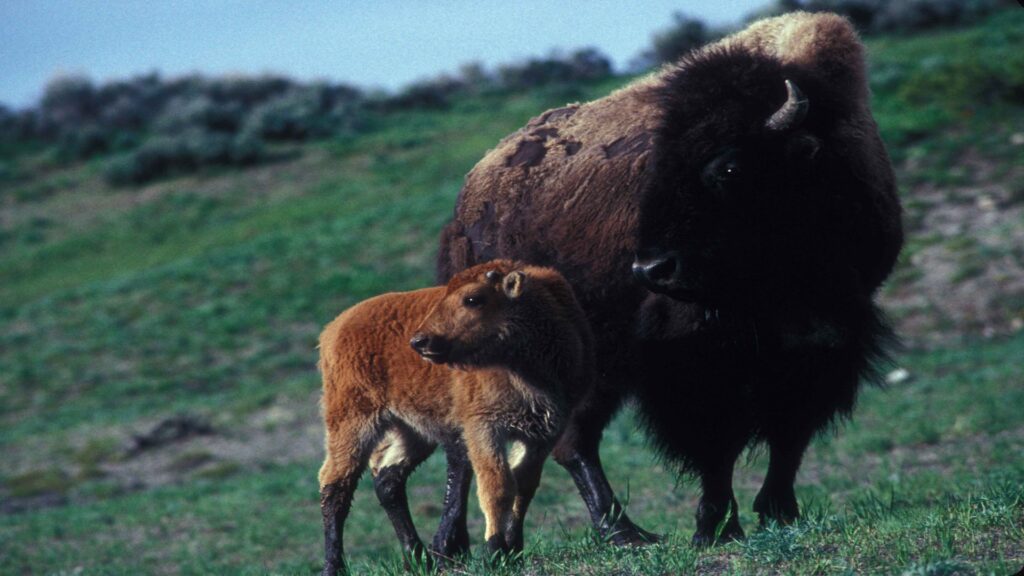
Female bison with calves present perhaps the most unpredictable and potentially dangerous encounter scenario for humans in bison country. Mother bison display extraordinary protective instincts toward their young, especially during the spring calving season from April through June. A mother will interpret any approach toward her calf as a serious threat, responding with swift and decisive aggression that may include charging without the typical warning signs.
The protective radius around a calf is significantly larger than a bison’s normal personal space, meaning you could trigger maternal aggression even from what seems like a safe distance.
When observing bison herds during calving season, take special care to identify mother-calf pairs and give them substantially wider berth than you would adult bison without calves. Remember that calves’ yellowish-red color makes them relatively easy to spot against the darker adults.
Herd Dynamics: Chain Reactions of Aggression
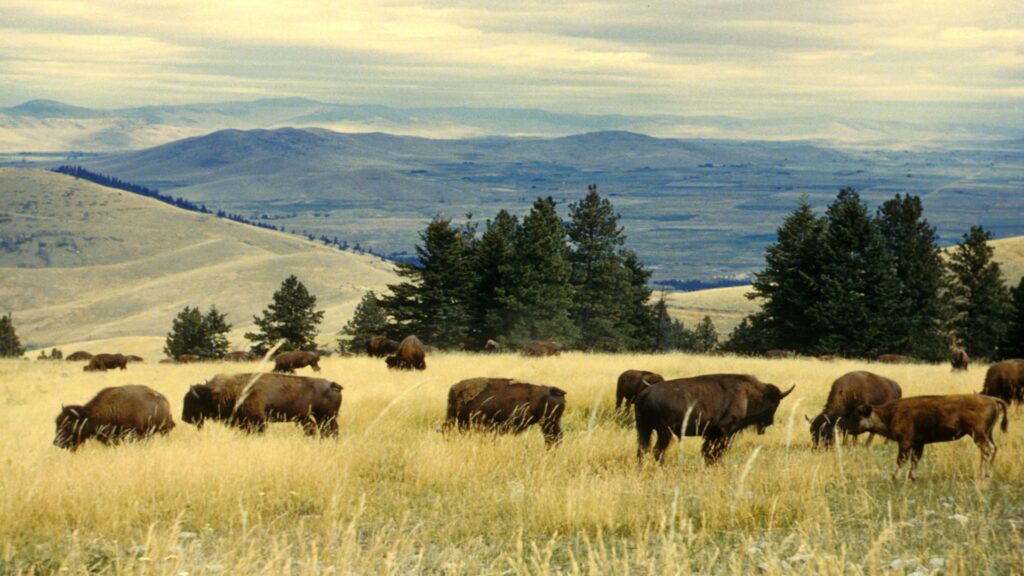
Bison live in social groups where the agitation of one animal can quickly spread throughout the herd, creating a dangerous situation for nearby humans. This phenomenon, sometimes called “emotional contagion,” means that even if you’re watching for warning signs from the nearest bison, you should be aware of the entire herd’s behavior. A disturbance that starts with one animal raising its tail or snorting can rapidly escalate as others pick up on these stress signals, potentially leading to multiple animals becoming agitated simultaneously.
Herd mentality may also mean that once one bison decides to charge, others might follow suit, creating an extremely dangerous situation where escape becomes nearly impossible. When observing bison herds, position yourself where you have clear escape routes and avoid situations where you could become surrounded or caught between groups of animals.
The Danger of Habituated Bison
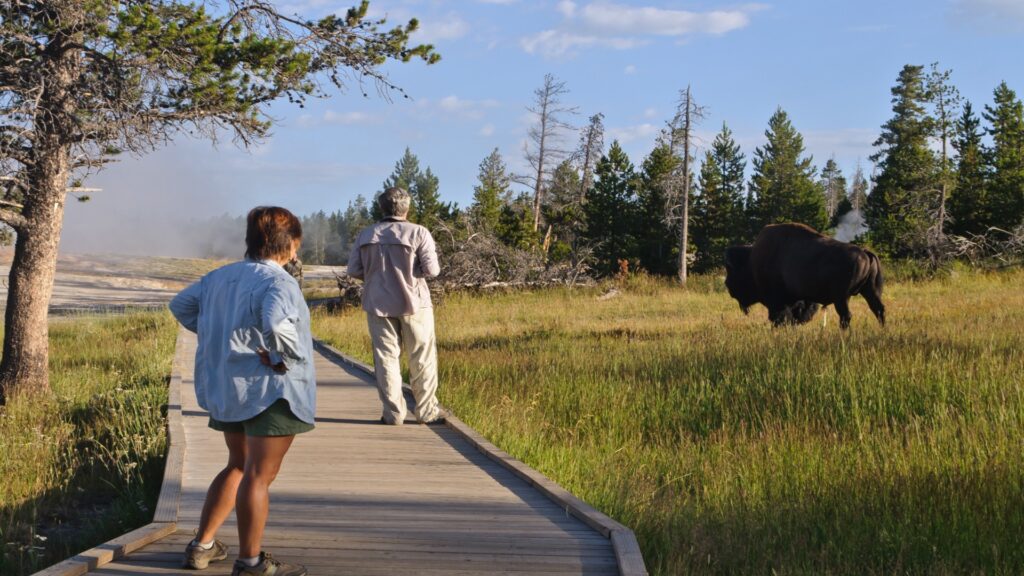
Bison that have become accustomed to human presence, particularly in heavily visited areas of national parks, present a unique danger because their apparent tolerance can mask their wild nature. These habituated bison may allow people to approach more closely without showing immediate signs of agitation, creating a false sense of security among visitors.
However, wildlife biologists emphasize that habituation doesn’t mean domestication—these animals retain all their wild instincts and can switch from seeming indifference to aggression in an instant if a certain threshold is crossed. The unpredictability of habituated bison makes them especially dangerous because they may skip earlier warning signs and proceed directly to charging when their tolerance is exhausted.
Park regulations requiring minimum distances from wildlife aren’t arbitrary—they’re based on understanding that even calm-appearing bison remain unpredictable wild animals capable of sudden aggression.
Environmental Factors Affecting Bison Behavior
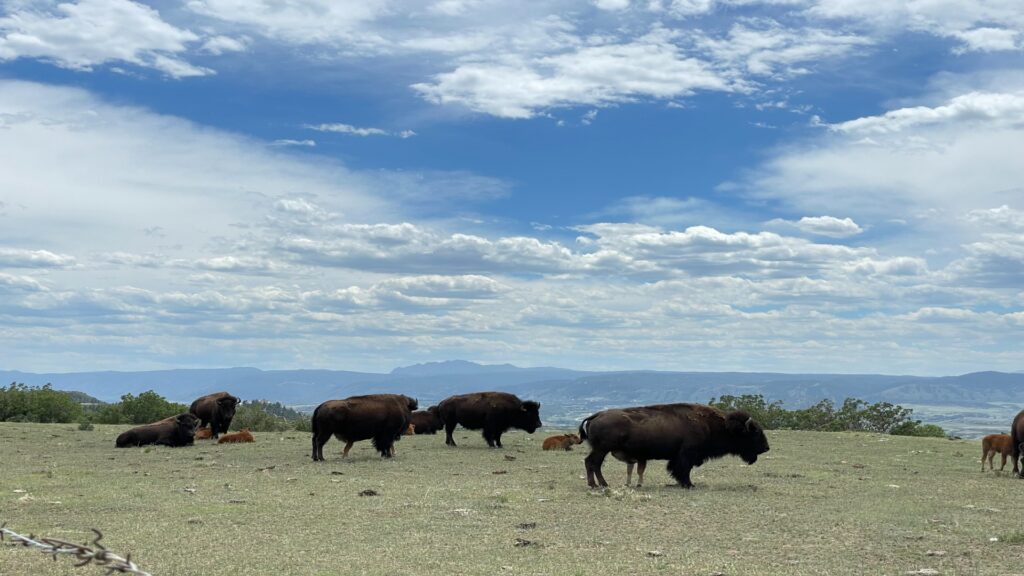
Environmental conditions can significantly influence bison aggression levels and should be factored into your risk assessment during encounters. Extremely hot weather can make bison more irritable and less tolerant of disturbances as they experience physical discomfort and higher stress levels. Similarly, severe winter conditions when food is scarce may lower their threshold for perceived threats around available grazing areas. Weather events like thunderstorms can also increase bison nervousness and reactivity, making them jumpier and more prone to defensive behavior.
Time of day matters too—bison tend to be more active and potentially more aggressive during dawn and dusk feeding periods, while midday heat often finds them less active but potentially more irritable if disturbed during rest. Being aware of these environmental factors helps you adjust your viewing approach according to conditions that might affect bison temperament.
The Misleading “Friendly” Approach
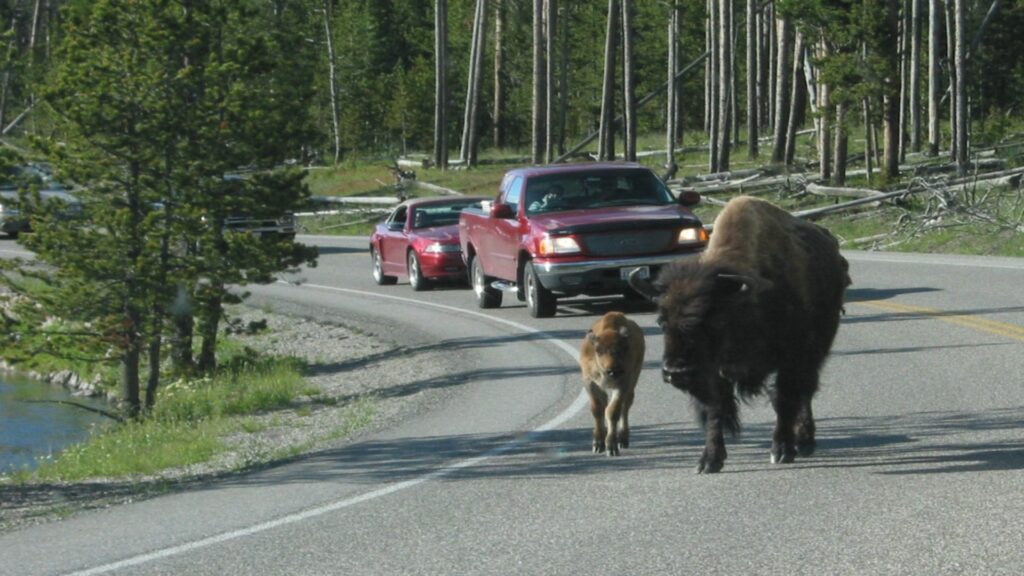
One of the most dangerous misinterpretations of bison behavior occurs when a bison begins walking toward humans in what appears to be a calm, non-threatening manner. Many visitors mistakenly interpret this approach as friendliness or curiosity when it’s actually the beginning of a territorial display that may escalate to aggression.
Unlike predators that might stalk stealthily, bison often approach perceived threats directly to assess them before deciding whether more aggressive action is needed. This deliberate approach may seem unthreatening because it lacks the obvious warning signs like tail-raising or snorting, but it represents the animal reclaiming its space.
Never stand your ground when a bison approaches, even if it seems calm—this direct approach often precedes more obvious aggressive behaviors, and by the time those appear, you may have lost your opportunity to retreat safely. Always maintain awareness that a bison moving toward you is never a positive sign, regardless of its apparent demeanor.
Safe Response: What To Do When You See Warning Signs
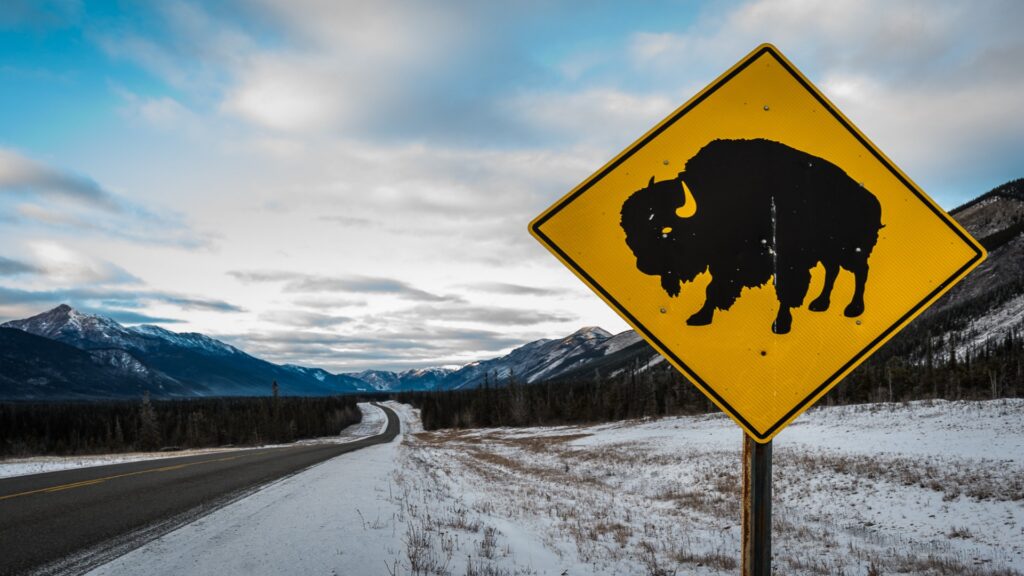
When you observe any warning signs that a bison might charge, your response should be immediate but measured—sudden movements can trigger the very charge you’re trying to avoid. The first rule is to create distance by backing away slowly without turning your back completely on the animal, moving diagonally away rather than in a direct line. Maintain awareness of your surroundings to avoid backing into other bison or hazardous terrain features like cliffs or rivers.
If you’re in a group, speak calmly to ensure everyone is aware of the situation and moves away together without panicking or running, which could trigger the bison’s chase instinct. Remember that bison can run much faster than humans, so your goal should be de-escalation through slow withdrawal rather than attempting to outrun the animal.
In the worst-case scenario where a charge becomes inevitable, seek substantial cover like a vehicle or large tree, or if nothing is available, lie flat and play dead to minimize injury—bison typically don’t continue attacking once the perceived threat is neutralized.
Conclusion
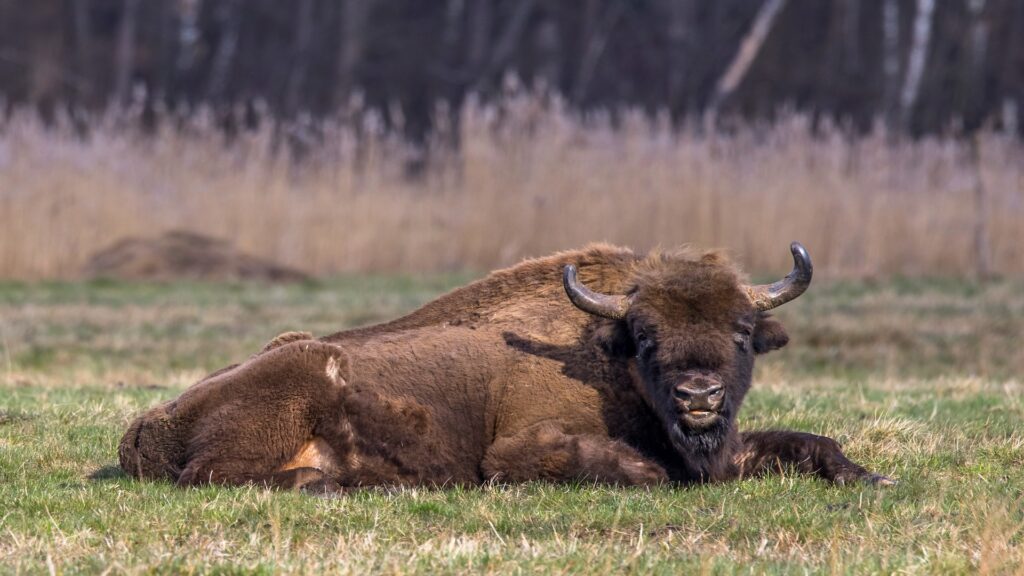
Encountering bison in their natural habitat offers one of North America’s most memorable wildlife experiences, but these magnificent animals command genuine respect and caution. By learning to recognize the warning signs of potential aggression—from tail positions and head movements to vocalizations and contextual factors like mating season or calf presence—outdoor enthusiasts can enjoy safer wildlife viewing while minimizing stress to the animals.
Remember that bison aren’t predictable performers but wild creatures following ancient instincts to protect themselves and their young. When visiting bison country, maintain recommended safe distances of at least 25 yards (and more during sensitive seasons), carry binoculars for close-up views without close-up risks, and always prioritize safety over photographs or bragging rights.
The most meaningful wildlife encounters are those where both human and animal walk away unharmed, with the natural order undisturbed.

